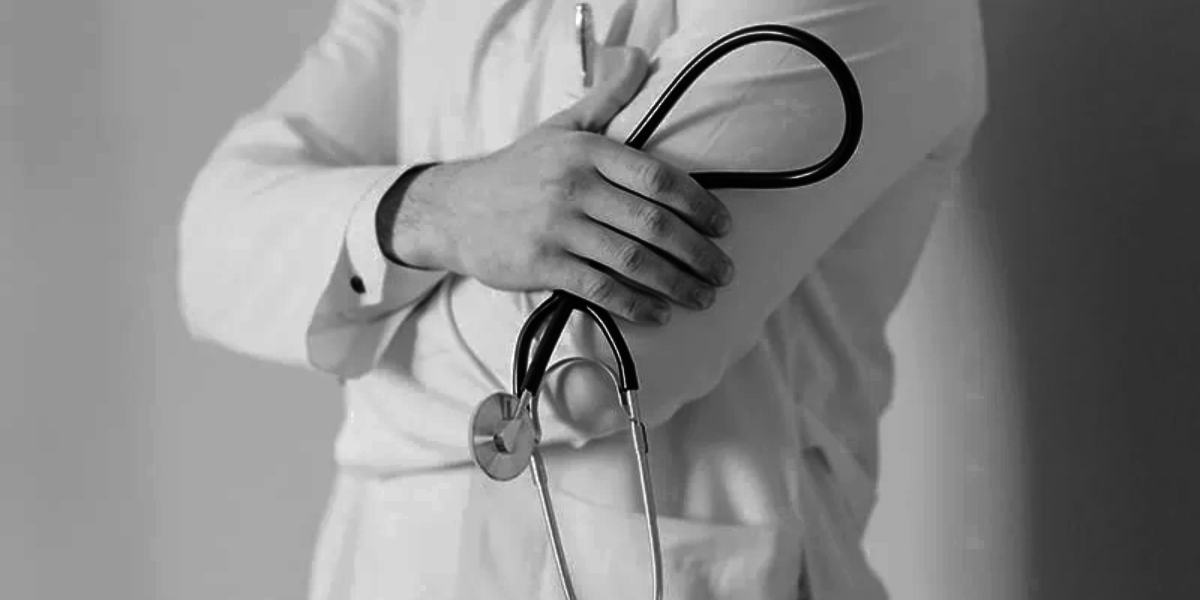Why is it that the same doctors we turn to during our moments of crisis are also the ones we mistrust when outcomes fall short? What do our expectations reveal about ourselves as seekers of medical care?
Published Jul 01, 2025 | 1:55 PM ⚊ Updated Jul 01, 2025 | 1:55 PM

Doctor. (Representative image)
Synopsis: While doctors are clebrated on National Doctors’ Day, we must also confront an uncomfortable truth that the very people we applaud for saving lives are increasingly being threatened, blamed and even attacked across the country.
On 1 July every year, India celebrates National Doctors’ Day, honouring the tireless service, skill, and compassion of our medical professionals. While we take a moment to thank our doctors, we must also confront an uncomfortable truth that the very people we applaud for saving lives are increasingly being threatened, blamed and even attacked across the country.
Why is it that the same doctors we turn to during our moments of crisis are also the ones we mistrust when outcomes fall short? What do our expectations reveal about ourselves as seekers of medical care?
Modern medicine has made extraordinary progress. Yet, culturally as a society, we have put doctors on a pedestal, treating them with the same reverence that we reserve for our gods. On the one hand, thanks to medical advancements, the perception of threat from diseases like polio and smallpox has almost vanished, and surgeries now replace joints, repair hearts, and even prolong life in ways that were unimaginable just a few decades ago.
On the other hand, people strongly believe that a doctor can miraculously fix anything.
In many parts of India, doctors are still seen as miracle workers. Families arrive at hospitals filled with hope, often with little understanding of the limits of what modern medicine can do. The deep reverence and gratitude they show can spiral into unrealistic expectations.
It is important to remember that doctors are trained to diagnose, manage, and treat. They operate within the boundaries of what is scientifically possible. They cannot completely guarantee outcomes. And they certainly cannot cure conditions for which no cure exists.
Yet, very often, doctors are held to impossible standards. During situations when treatment fails or a life is lost, grief often turns into blame, and blame into aggression against the very professionals who tried their best to help.
From there, it doesn’t take long for public sentiment to turn against doctors and healthcare staff. Increasing cases of assault on doctors and vandalism of hospital property are a stark reminder of a crisis growing into a large-scale epidemic.
The magnitude of this crisis is very concerning. The magnitude of this crisis is very concerning. According to the Indian Medical Association (IMA), more than 75 percent of Indian doctors have experienced some form of workplace violence during their careers.
A research published in Indian Journal of Community Medicine in 2020 supports this, highlighting that these incidents most commonly occur in high-stress areas such as emergency departments and intensive care units (ICUs), where medical outcomes are often unpredictable and during visiting hours or when bills have to be settled especially after the death of a patient.
Notably, nearly 50 percent of these violent episodes happen during the delivery of emergency services.
From junior residents in government hospitals to experienced doctors working in the private sector, the narrative of families resorting to violence against them is becoming increasingly common. While stronger legal protection and enforcement are important, this issue is not only a law-and-order problem, but is also a cultural problem.
At the root of this crisis is a society that expects its doctors to perform miracles that defy the logic of science. People in India also incur a lot of personal debt – sometimes even pledging property as collateral for loans – to meet expensive treatment costs. So outcomes that do not match hopes and expectations, turn into triggers for violence against doctors and medical staff.
Beneath the scrubs and the lab coats, doctors are people who go to work day after day, meet the sick and the dying, and do their best to help them recover. They are not immune to grief when they lose a patient. They also carry the emotional weight of every decision, every diagnosis, and every life that is placed in their hands.
Long hours of work, the relentless pressure from patients’ families, and the threat of violence are driving higher burnout rates today. Many doctors suffer in silence and often find themselves mentally, emotionally, and physically drained. But still, they show up every day because they are committed to heal and help those who come to them for medical treatment.
While it may not be possible to end violence overnight, what can mitigate a tense situation is compassion by healthcare professionals, better communication with patients and their families regarding all possible outcomes before starting treatment, discussing probable costs threadbare, and higher patient awareness of the disease/illness.
This Doctor’s Day, let us not just offer our doctors polite applause or thank-you notes. Let us also understand that they are neither magicians nor gods, but human beings bound by the limits of medical science.
(Views are personal. Edited by Muhammed Fazil.)
